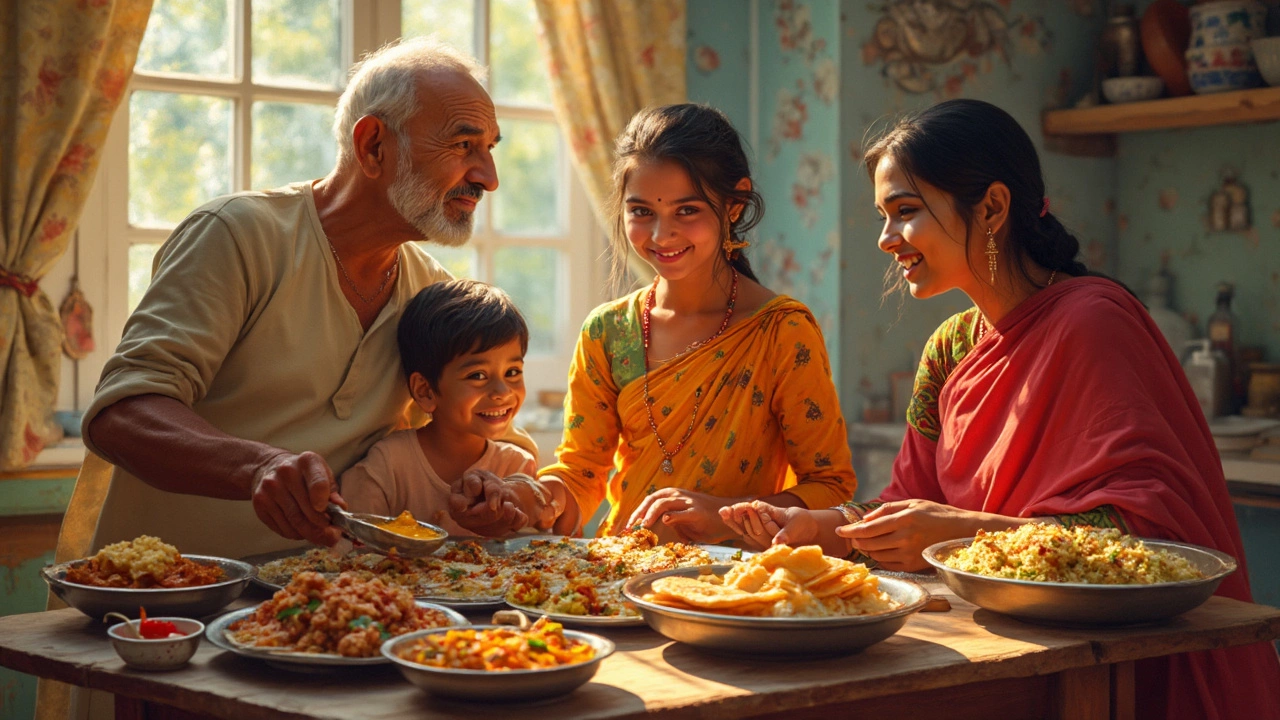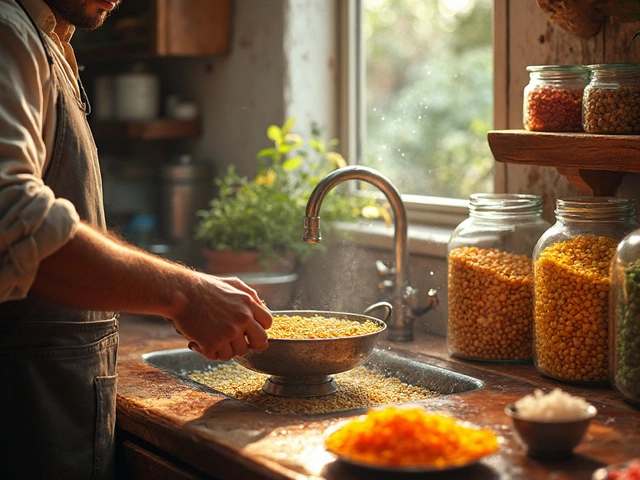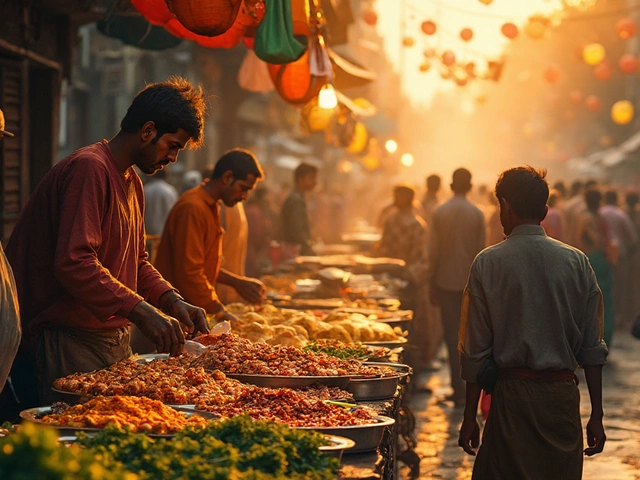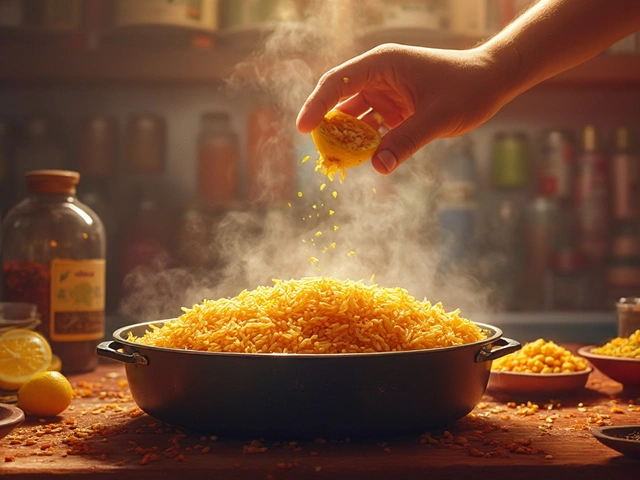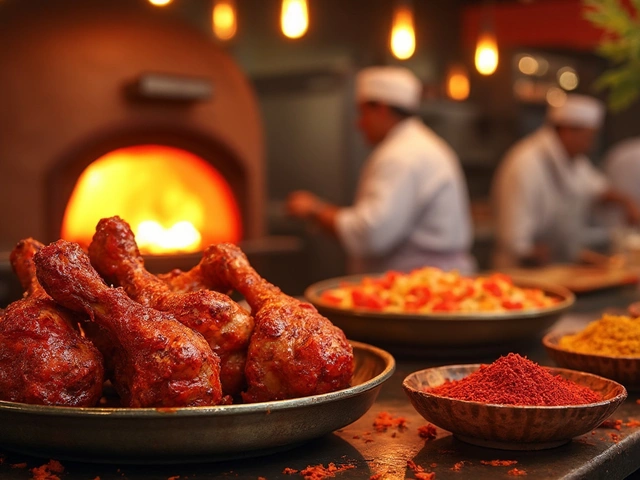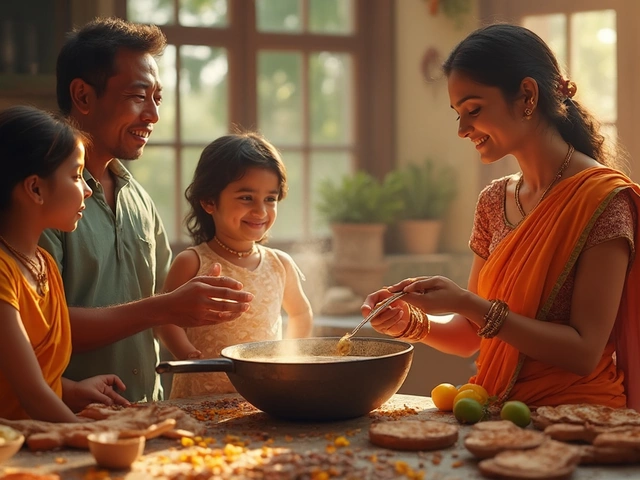Ask five people what a classic Indian dish is, and you’ll probably get five different answers. Some swear by creamy butter chicken, while others think simple dal and rice is the heart of Indian food. But no matter who you ask, it all comes down to flavor, family, and everyday comfort.
Classic dishes usually stick around because they taste amazing with very basic ingredients, and they work for both special occasions and quick weeknight meals. The cool thing? Many favorites—like chana masala or palak paneer—are surprisingly easy to make once you know the basics. Don’t let the spice jars and long ingredient lists scare you. A lot of Indian home cooking is about building up flavor a step at a time, and you can use shortcuts or store-bought bases if you need to.
- Defining a Classic Indian Dish
- Iconic Dishes Across India
- The Role of Spices and Techniques
- Family Traditions and Daily Meals
- Tips for Making Classics at Home
- Shortcuts and Easy Variations
Defining a Classic Indian Dish
So, what actually turns a recipe into a classic Indian dish? It usually comes down to a mix of history, popularity, and real-life practicality. The foods people keep making, eating, and passing along get called “classics.” Think dal, the lentil stew you’ll find bubbling on stoves from Mumbai to rural villages, or roti, the simple flatbread that finds its way onto just about every table.
A dish earns “classic” status when it shows up at both family dinners and festive celebrations. It’s not just about bold flavors—it’s about comfort and routine. Did you know that dal chawal (lentils and rice) is the Indian version of chicken soup for the soul? Everybody’s grandma has her own recipe!
"Indian cuisine has a thousand faces, but its real classics are the ones we cook every day, almost without thinking. Those are the flavors that tell our stories." — Chef Madhur Jaffrey, culinary writer
Classics aren’t stuck in time, though. Chicken tikka masala actually became big in Britain, but you’ll find it on Indian restaurant menus all around the world now. Butter chicken is another newer star, invented in Delhi not so long ago, yet most people think of it as old-school Indian. Then you have things like aloo gobi (potatoes and cauliflower) or rajma (kidney bean stew), which just fit into any era, feeding big families on a budget.
- Broad appeal—kids love it, adults crave it, and it works for guests
- Simple ingredients you can get almost anywhere
- Stays relevant through generations and in all regions of India
Bottom line: if people know how to cook it without looking up the recipe, it’s probably considered a classic. And trust me, you don’t have to learn every regional version—just start with one and tweak it to taste. That’s how classics survive everywhere from busy city flats to the quietest country kitchens.
Iconic Dishes Across India
If you travel around India, it’s wild how the food completely changes every few hundred miles. North India has that creamy, tomato-based butter chicken everyone loves. Down south, you’ll find dosas—crunchy rice-and-lentil crepes—served hot with coconut chutney. Each region throws its own twist into what makes a classic Indian dish.
Here are just a few must-try favorites from different parts of the country:
- North India: Think of buttery naan, spicy samosas, and dal makhani (a slow-cooked black lentil dish that’s a staple in Delhi and Punjab).
- South India: Dishes like dosa, idli (steamed rice cakes), and sambar (a tangy lentil stew) rule the breakfast scene.
- West India: Mumbai’s pav bhaji is a mash of veggies topped with a pat of butter, served with fluffy bread rolls. Gujarat loves its dhokla—spongy, savory bites made from fermented chickpea flour.
- East India: Bengal is famous for its fish curry and sweet treats like rasgulla. People in Assam often whip up tangy fish stews with mustard seeds.
Many Indians eat some kind of rice every single day, but the type of rice dish changes a lot depending on where you are. For example, Hyderabad’s biryani—which packs layers of spiced meat or veggies and long-grain basmati rice—is legendary. It’s not just delicious but often made for big celebrations.
Curious about how popular these dishes actually are in India? Here’s a quick look at what people order most at restaurants and on food delivery apps in 2024:
| Dish | Region | Popularity (Order Rank) |
|---|---|---|
| Butter Chicken | North | 1 |
| Biryani | Pan-India | 2 |
| Pav Bhaji | West | 3 |
| Dosa | South | 4 |
| Paneer Tikka | North | 5 |
Some dishes became top picks just in the last decade mainly because Indian families love a mix of old-school meals and the fun of eating out or getting takeout. So, whether you try something rich like a Punjabi curry or something simple like masoor dal, you’re tasting a piece of India’s food story.
The Role of Spices and Techniques
If you step into any kitchen making a classic Indian dish, you're almost guaranteed to see a mix of colorful spices lined up on the counter. The exact lineup changes from house to house, but you'll regularly spot turmeric, cumin, coriander, garam masala, and chili powder. Each one brings its own flavor, and knowing which spice to use when makes all the difference.
Spices aren't just dumped in at once—timing matters more than you might expect. For example, whole spices like cumin seeds or mustard seeds are usually tossed in hot oil at the very beginning. This simple step, called 'tempering,' wakes up the flavors and gives dishes a subtle, nutty base. That’s why dal tadka tastes so good: the garlic and cumin sizzle in hot ghee before joining the lentils.
After the tempering, ground spices get added at different stages depending on the recipe. Adding them early cooks out the raw flavor, while adding some toward the end gives a burst of freshness. That’s the secret behind deep, layered curries versus light veggie dishes.
It’s not all about heat, though. Most classic recipes balance spicy, sour, salty, and sweet. Think a dash of lemon at the end, a swirl of yogurt, or even a bit of sugar in some tomato-based curries—tiny tweaks make a huge difference.
- Get to know your spices—smell and taste them so you know what each does.
- Don’t skip the tempering step if you're after that restaurant-style flavor at home.
- Invest in a small spice grinder for fresher ground spices—pre-ground jars lose flavor fast.
As for cooking techniques, most everyday Indian meals are built step by step in one pot. You heat oil, temper the spices, add onions and garlic, then layer veggies or meat, and finish with fresh herbs or a squeeze of citrus. No fancy equipment needed—just patience and a little practice.
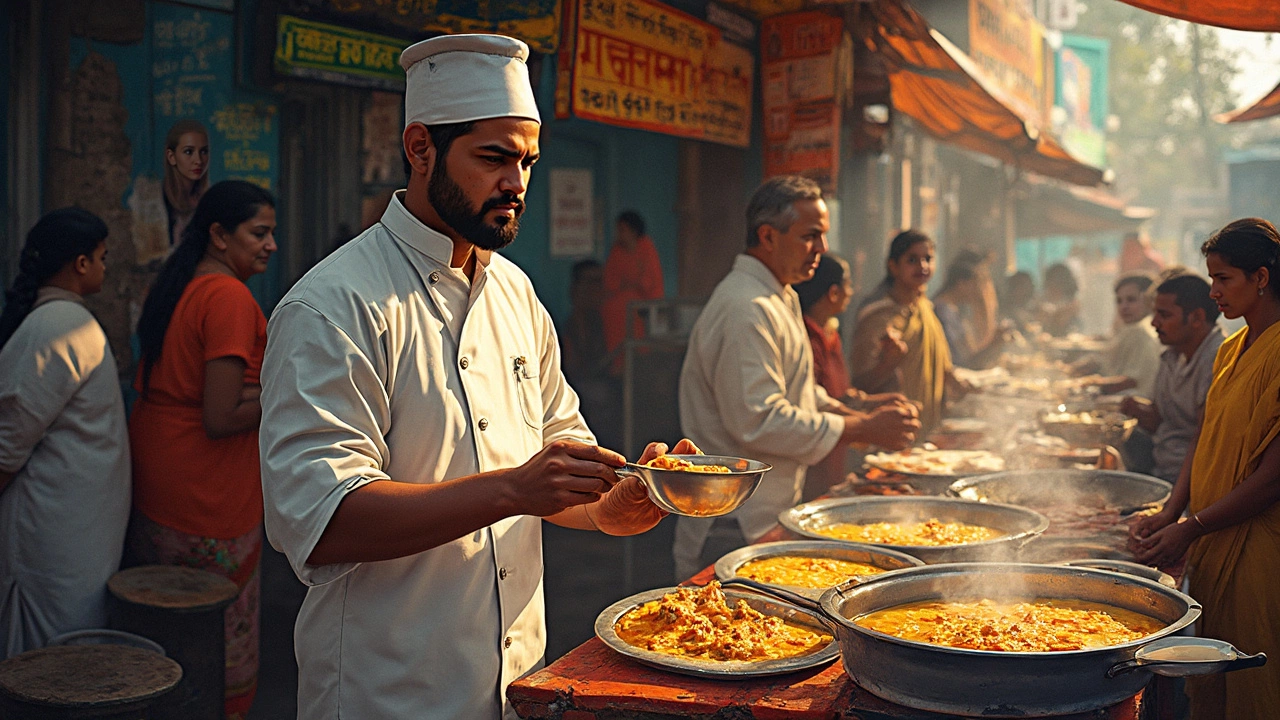
Family Traditions and Daily Meals
For most Indian families, a classic Indian dish means home-cooked food that shows up at the table day after day. We’re talking dal (lentil soup), sabzi (vegetable stir-fries), and flatbreads like roti or paratha. These aren’t reserved for celebrations—they make up regular meals, and kids often grow up eating them with their hands, mixing flavors right on their plates.
It’s common for each family to have their own twist. My grandma, for example, adds a little sugar to her Gujarati dal, while my neighbor in Bangalore swears by extra curry leaves in hers. These differences aren’t small; they’re how recipes get passed between generations, with stories and tips sprinkled in. That’s how my kids, Jasper and Leona, learned which dal goes best with plain rice and which needs a side of spicy pickle.
A standard Indian meal isn’t as complicated as it looks. Usually, you’ll see a plate with:
- One or more vegetable dishes (sabzi)
- A lentil or bean curry (dal, rajma, or chana)
- Rice and/or flatbread (roti, chapati, or naan)
- Something tangy—like a bit of pickle or fresh chutney
- Yogurt or raita for cooling things down
This setup works whether it’s a quick weekday dinner or a lazy family lunch. Most home cooks plan ahead, making big batches of dal and rice that last a couple of days. Leftovers get reworked into new meals—like leftover sabzi rolled up in a paratha for the kids’ lunchboxes.
If you really want to get the feel for Indian daily meals, try making a simple dal and serve it with rice or roti, plus a spoonful of yogurt. Add a veggie side if you like. It’s not flashy, but it’s the kind of comfort food people keep coming back to, no matter what else is on the menu.
Tips for Making Classics at Home
Making a classic Indian dish in your own kitchen doesn’t need to feel like a huge project. Here’s how you can get those bold flavors without stress or days of prep.
First, if you’re just starting out, keep your spice selection simple. You really only need cumin, coriander, turmeric, chili powder, and garam masala. These five cover most basics and can make a plain chicken or chickpea curry taste amazing. Buy spices in small amounts from a local Indian grocery—they’re fresher and cheaper than supermarket jars.
Next, always start with the basics: onions, garlic, and ginger. For lots of dishes, you’ll sauté these first until they’re golden. This step brings out tons of flavor—don’t rush it. If you’re tight on time, use ginger-garlic paste from a jar. It’s a lifesaver on busy nights.
Don’t worry about making everything from scratch. Store-bought curry pastes and canned tomatoes are totally fine for quick meals. Even in India, many families use pressure cookers or Instant Pots for speedy dals and curries.
If you want a shortcut for rice, try microwaving pre-cooked basmati. You’ll have fluffy rice in minutes, perfect for scooping up curry or dal. For naan or roti, store-bought versions are a legit time-saver.
| Essential Ingredient | Average Price (US) | Time Saver? |
|---|---|---|
| Curry Paste (jar) | $4-$6 | Yes |
| Basmati Rice (pre-cooked) | $3-$4/pack | Yes |
| Ginger-Garlic Paste | $2-$3 | Yes |
| Mixed Spices (packet) | $1-$2 | Yes |
| Canned Tomatoes | $1-$2 | Yes |
Don’t shy away from tasting as you go. Classic Indian dishes come together with layers, so adjust salt, chili, or lemon juice at the end. This is how you’ll find the flavor that hits home for you—or for picky kids like mine.
- Use yogurt to mellow out spicy curries.
- Add a pinch of sugar to balance tomato-based dishes.
- Lime or lemon squeezed at the end gives a fresh kick.
Learning to make Indian classics is really about practice and tasting along the way. Start with simple recipes, use time-saving ingredients, and don’t overthink it. Pretty soon, these dishes will become weeknight regulars for you too.
Shortcuts and Easy Variations
Let’s be honest, not everyone has an hour to make dinner or the space to store a hundred different spices. Good news: you can still enjoy all the big flavors of a classic Indian dish without spending forever in the kitchen. I’ve been there, when Jasper asks for butter chicken at 6 p.m. and the only thing thawed is a bag of frozen spinach. Here’s what helps most home cooks keep things doable:
- Ready-Made Spice Mixes: You don’t have to grind spices from scratch. Brands like MDH and Shan make decent pre-mixed masalas for dishes like chana masala or dal makhani. They’re everywhere now—even online grocery stores have them.
- Store-Bought Bases: Tomato puree, ginger-garlic paste, and even packaged onion-tomato gravies save tons of time. I keep little jars in my fridge for frantic weekday meals.
- Frozen Veggies: Frozen spinach for saag paneer or mixed vegetables for curry works just as well as fresh—and nobody at my table has ever noticed the difference.
- Pressure Cooker or Instant Pot: Indians love these gadgets for a reason. They cut cooking times for lentils and stews by more than half. I cook dal in under 20 minutes, which is a lifesaver when juggling school pickups and soccer practice.
Trying to avoid dairy or need gluten-free options? Indian food is super flexible. For example:
- Swap out cream in butter chicken for coconut milk or cashew cream—it turns out rich and smooth.
- Use lentils or chickpea flour (besan) for binding or thickening if you need to skip wheat flour.
Here’s a quick breakdown of how much time you actually save with these tricks:
| Dish | Traditional Method (minutes) | With Shortcuts (minutes) |
|---|---|---|
| Butter Chicken | 60-75 | 35-40 |
| Chana Masala | 50-60 | 30-35 |
| Palak Paneer | 45-60 | 25-30 |
| Simple Dal | 40-50 | 15-20 |
If you have kids who pick out “weird stuff” in their food, blend your sauces smooth and add veggies they already like (Leona only tolerates carrots and potatoes, so those sneak into all sorts of curries). Indian food loves personal twists—nobody will complain if your butter chicken has extra peas or your dal is extra creamy. Keep experimenting until it fits your family’s tastes and your schedule. The easy versions count just as much as the full-on, slow-simmered classics.





